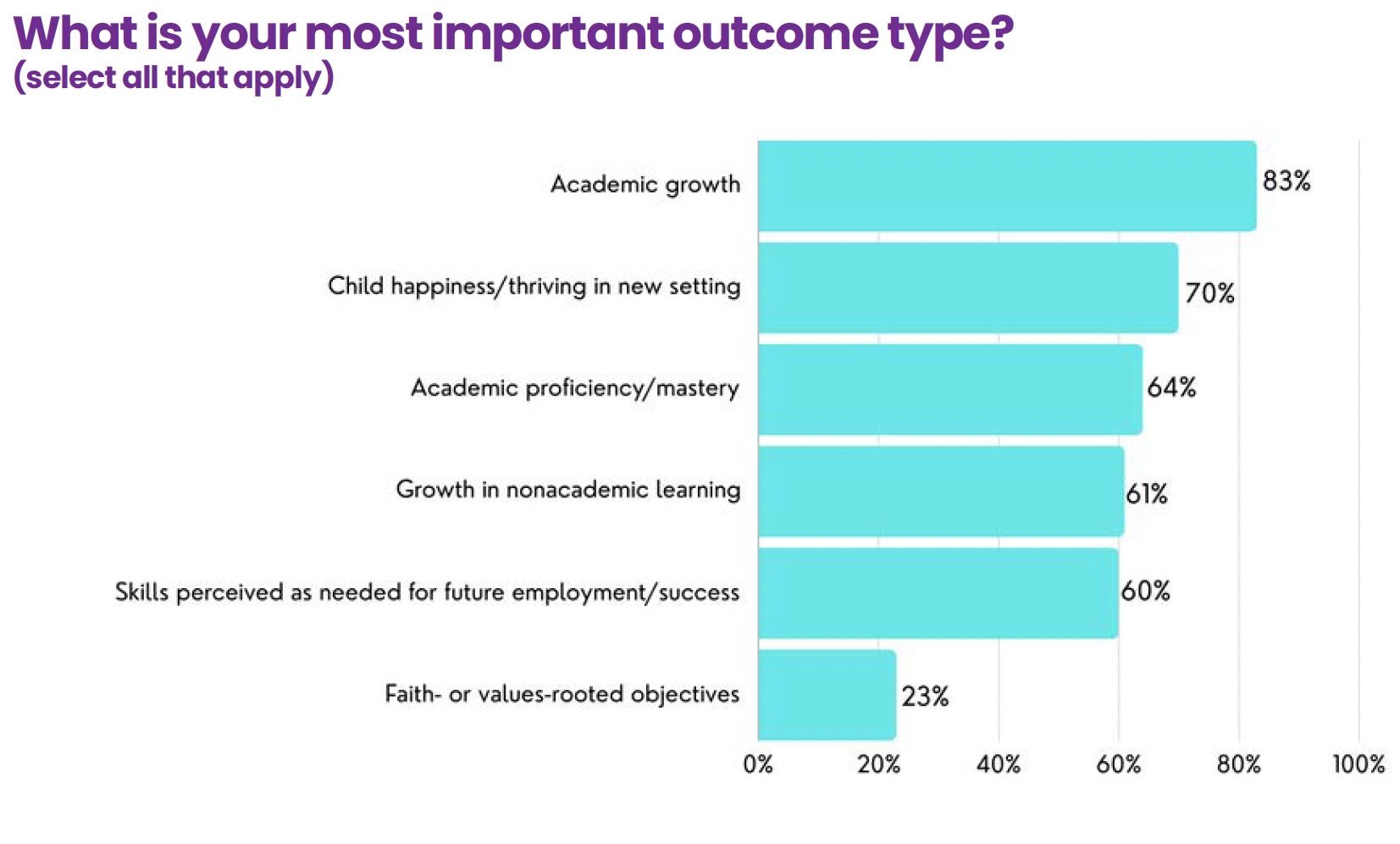Why Your Microschool's Handbook Matters
In one of the more oft-quoted lines in constitutional law, the Supreme Court said in 1969 that neither a teacher nor a student “shed their...
2 min read
Don Soifer : Oct 26, 2022 4:44:31 PM
During a week when education news stories have revolved around what the Nation’s Report Card assessments revealed what education systems have not taught children these past two years, and why not, a new study offers illuminating new insights into what parents’ wish schooling could be for their children that it currently is not.
“The features of learning most attractive to parents,” the researchers concluded, “is a more personalized education… that match their child’s needs and programming that supports their specific interests.”
The report, Choose to Learn, from education researchers at Tyton Partners, found that four major factors of a system for schooling that reflects what parents are looking for can be summarized into:
Viewpoints collected from 3,000 interviews with scientifically representative groups parents of school-aged children nationally were analyzed. Also central to the analysis were questions about what barriers currently prevent families from pursuing more optimal schooling opportunities that better align with what they are looking for, and how can access be improved by overcoming these barriers.
For more than half of parents surveyed, and two-thirds of those from backgrounds characterized as educationally underserved, affordability of more agreeable options was the number one obstacle. Availability of options close to home, and ability to find and identify preferable options were the second and third most common reason. Although it is important to note that families from educationally underserved backgrounds were less hampered by their ability to find more desirable options than respondents overall, just less likely to feel they could afford them.
America's fast-growing microschooling movement is rooted in burgeoning demand for personalized small learning environments, where models can be created around the particular educational needs of the individual students they serve. While other schools-of-choice sectors rely on replication of successful school models to scale across different communities or populations, microschooling embraces individualization in ways which can be extremely difficult, if not impossible, within the systematic rigidities and demands for standardization common in other schooling sectors.
With next-generation state school choice models like West Virginia's Hope Scholarship program and Arizona's universal Education Savings Accounts now actively underway, affordability barriers to equitable access to schooling models like those discussed in the Choose to Learn report can be overcome by allowing dollars to follow children to the learning environments of their choice. As families increasingly seek out truly innovative schooling models, including those where learners receive their educations from individualized programs using different providers as sources to share the teaching and learning responsibilities in active partnerships, new answers to the important questions raised in this new report will take shape.

In one of the more oft-quoted lines in constitutional law, the Supreme Court said in 1969 that neither a teacher nor a student “shed their...

Microschools can be, and frequently are, unique learning environments where learning and growth take place in any number of different ways. This...

For microschool founders, establishing and working with your board can feel like tricky business.